
Take a stroll down the streets of Ginza and you’ll have no trouble realizing it’s Tokyo’s epicenter of everything posh and luxurious. The neighborhood is packed with shop after shop boasting high-end fashion, jewelry, and dining, so it’s only natural to think that any sushi restaurants in the area cater to an upscale clientele.
That being said, three reporters from our Japanese-language sister site began to wonder what would happen if they went to a Ginza sushi restaurant dressed to varying degrees of formality and ordered a special o-makase (“leave it to the chef”) course.
Would they each be offered different menu items depending on how they were dressed? Would their bills come out to be significantly different? With these burning questions in mind (and the prospect of eating sushi in the guise of journalism), they decided to conduct a little experiment to find out for themselves!
■ Going to a sushi restaurant while dressed three different ways
To recap, our reporters wanted to know how much the way they dressed would affect the bill and whether the food they were served was either cheaper or more expensive. To find out the answers to these questions, three of our illustrious Japanese reporters separately visited the same sushi restaurant in Ginza. Each was dressed in a different manner: Nakano went dressed from head-to-toe in casual Uniqlo gear (even going so far as to slip on a pair of their casual shorts); the intrepid Mr. Sato went decked out in some of his best “luxury gear;” and a dashingly dressed male reporter, whom we’ll refer to as “Elite Salaryman,” went dressed in a formal office get-up.
▼ Mr. Sato makes his grand entrance
Before we reveal the specific results of their dining experiment, we should tell you that although all three of them ordered the o-makase course, in which the choice of sushi is made by the restaurant staff, and all three of them received different totals on their bills.
■ Accounting for the different bills
Here’s a rundown of what each of reporter had to pay at the end of their meal:
1. Nakano’s 20 pieces of sushi and one drink came out to be 7,100 yen (US$58.02).
2. Mr. Sato’s two drinks, an appetizer, and 23 pieces of sushi came out to be a little less than 13,000 yen ($106.23).
3. Elite Salaryman’s three plates of food/sashimi and nine pieces of sushi came out to be a little less than 12,000 yen ($98.05).
▼ One of Elite Salaryman’s scrumptious servings of sushi
Comparing the actual meals themselves, the three concluded that the kinds of sushi served to both Nakano and Mr. Sato were very similar. Elite Salaryman, on the other hand, was mainly served food that would pair well with his drink of choice, but he noted that the quality of the sushi didn’t seem to differ regardless.
All in all, our reporters unanimously agreed that the difference in pricing was in no way due to their outer appearances; the restaurant did not purposely charge Nakano less due to his casual Uniqlo outfit, nor did they overcharge the other two based on their fancier clothing. The following are some of the factors that they determined could have influenced the different bill outcomes:
- All three of them had different servers, who asked them differing questions when placing their orders. The way they answered questions such as “Would you like sushi from the start?” and “Would you prefer sushi or other dishes?”, took each of their orders in a different direction.
- The longer they talked with their respective servers, the more likely they were to unintentionally order more food. In fact, this is exactly what happened to our chatterbox Mr. Sato–he ended up ordering a lot of food because he couldn’t stop talking.
- The servers were somehow able to invariably sense when each one of them was getting full, so they ended the meal at different times for each person (it took Mr. Sato a longer time to get full than it did for Nakano).
In conclusion, it seems like the servers tried to pinpoint how each individual would like his food to be served, and therefore tailored the course of the meal accordingly.
▼ Are we making your mouth water yet?
■ They really hit the mark with this place!
Although all three of our writers ended up with slightly different food and monetary totals, they were all extremely satisfied with their meals. They left the place gushing about their experiences, saying things like “It’s just as I expected–Ginza sushi really is on a different level!” and “That was the best!”
By the way, the particular restaurant that they visited for this little experiment is called Hakodate Sushi Headquarters. Although its main location is in Hakodate, Hokkaido, the Tokyo Ginza branch appears to be doing quite well. For a sushi restaurants in Ginza, it’s about what you’d expect in price at around 8,000-10,000 yen ($65.27-$81.60) per person.
Although our reporters entered the restaurant with a veiled purpose, they actually hit upon a very decent place to dine. They would definitely recommend it to anyone who’s looking for some quality sushi in Ginza!
Restaurant information
Hakodate Sushi Headquarters–Tokyo Ginza Branch / はこだて鮨金総本店 東京銀座店
Address: Tokyo-to, Chuo-ku, Ginza 8-7-9 Ryuma Building 1st floor
東京都中央区銀座8-7-9 龍真ビル1F
Open Weekdays 5 p.m.- 2 a.m., Saturdays/holidays 4 p.m.- 10 p.m.
Closed Sundays
Website
Lastly, get ready for an appetizing photo dump!
▼ Here’s the food that Mr. Sato ate for 13,000 yen ($106.23).
▼ Here’s the food that Elite Salaryman ate for 12,000 yen ($98.05).
▼ Here’s the food that Nakano ate for 7,100 yen ($58.02).
All images © RocketNews24
[ Read in Japanese ]






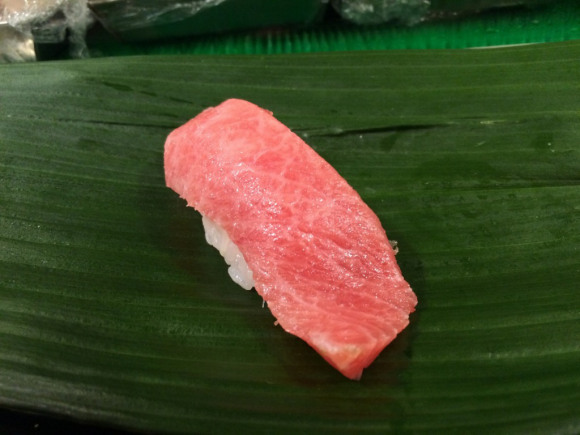










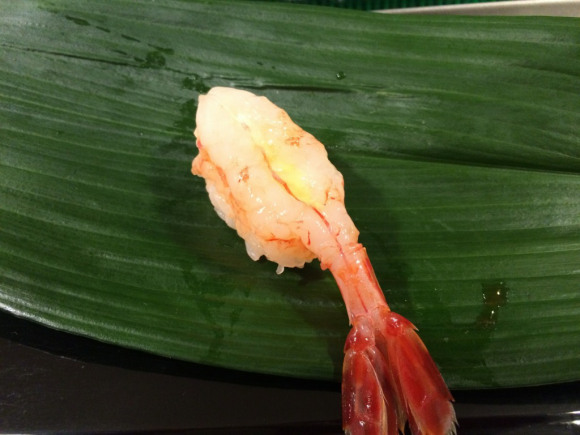
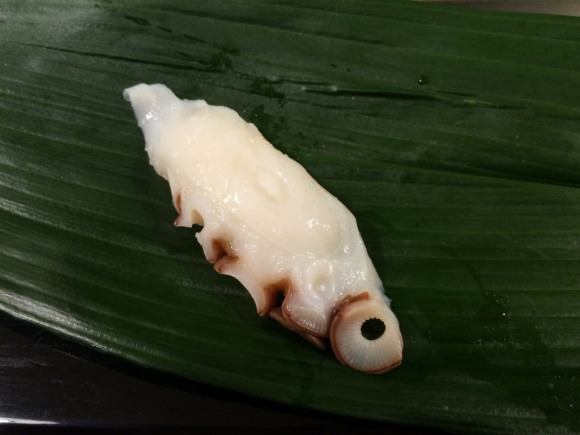



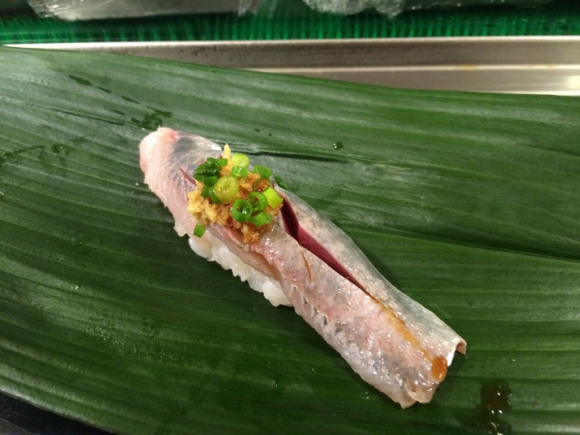







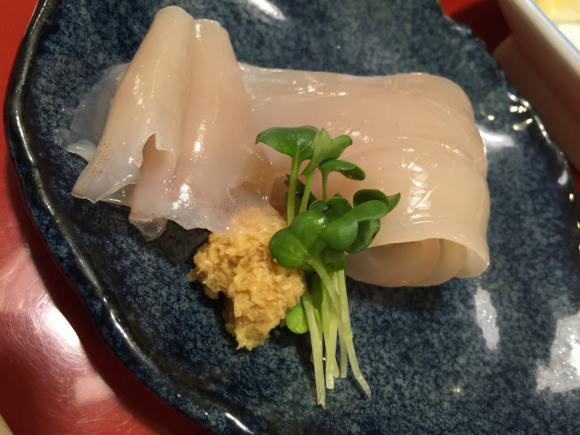



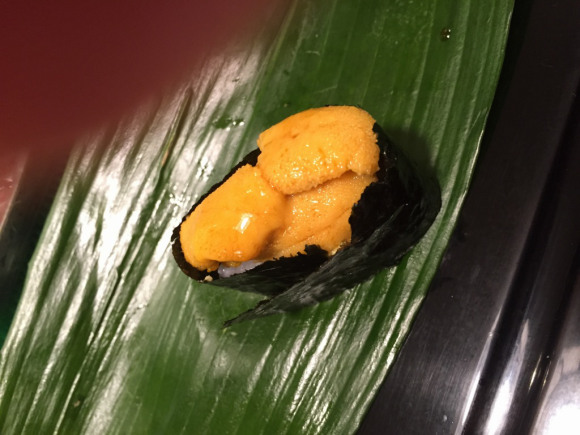















 Sukiyabashi Jiro Sushi Rice: How good is rice from Japan’s legendary sushi restaurant?
Sukiyabashi Jiro Sushi Rice: How good is rice from Japan’s legendary sushi restaurant? Continuing our tour of the best sushi in Tokyo’s Tsukiji Fish Market with Mr. Sato! (Part 2)
Continuing our tour of the best sushi in Tokyo’s Tsukiji Fish Market with Mr. Sato! (Part 2) Mr. Sato has a life-changing experience at this revolving sushi restaurant in Tokyo
Mr. Sato has a life-changing experience at this revolving sushi restaurant in Tokyo This ISN’T what a US$100 Tokyo sushi lunch looks like. It’s what a US$200 one looks like!
This ISN’T what a US$100 Tokyo sushi lunch looks like. It’s what a US$200 one looks like! Red light district sushi restaurant in Tokyo shows us just how wrong we were about it
Red light district sushi restaurant in Tokyo shows us just how wrong we were about it Pizza Hut Japan’s hot lucky bags are perfect for a New Year’s pizza party
Pizza Hut Japan’s hot lucky bags are perfect for a New Year’s pizza party We found possibly the quietest Japanese-style hotel in Tokyo’s bustling Shinjuku district
We found possibly the quietest Japanese-style hotel in Tokyo’s bustling Shinjuku district 7 great places to see Mt. Fuji from without having to climb it
7 great places to see Mt. Fuji from without having to climb it The top 70 words that keep showing up in Japanese light novel titles (and yes, isekai is one of them)
The top 70 words that keep showing up in Japanese light novel titles (and yes, isekai is one of them) Japanese thug wear from Birth Japan perfect for those breaking bad next year
Japanese thug wear from Birth Japan perfect for those breaking bad next year All-you-can-eat yakiniku in Shinjuku for less than 10 bucks!
All-you-can-eat yakiniku in Shinjuku for less than 10 bucks! 7-Eleven Japan starts new temporary luggage storage service in over 300 branches
7-Eleven Japan starts new temporary luggage storage service in over 300 branches 7-Eleven Japan’s ramen-cooking robot whipped us up a bowl of noodles【Taste test】
7-Eleven Japan’s ramen-cooking robot whipped us up a bowl of noodles【Taste test】 Prominent boob-centric manga artist shocks fans by revealing she’s a beautiful buxom woman
Prominent boob-centric manga artist shocks fans by revealing she’s a beautiful buxom woman Eight Ways You Really, Really Shouldn’t Use a Japanese Toilet
Eight Ways You Really, Really Shouldn’t Use a Japanese Toilet Starbucks Japan ready to get Year of the Horse started with adorable drinkware and plushies【Pics】
Starbucks Japan ready to get Year of the Horse started with adorable drinkware and plushies【Pics】 Cyberpunk anime meets traditional culture in Ghost in the Shell gold leaf Japanese changing screens
Cyberpunk anime meets traditional culture in Ghost in the Shell gold leaf Japanese changing screens Hello Kitty Choco Egg figures are an adorable trip through three periods of Japanese pop culture【Pics】
Hello Kitty Choco Egg figures are an adorable trip through three periods of Japanese pop culture【Pics】 Japan’s otoshidama tradition of giving kids money at New Year’s gets a social welfare upgrade
Japan’s otoshidama tradition of giving kids money at New Year’s gets a social welfare upgrade Lacquerware supplier to emperor of Japan and Pokémon team up for new tableware
Lacquerware supplier to emperor of Japan and Pokémon team up for new tableware Sumo Sanrio! Hello Kitty and pals team up with Japan Sumo Association for new merch【Pics】
Sumo Sanrio! Hello Kitty and pals team up with Japan Sumo Association for new merch【Pics】 Can a dirty butthole make you filthy rich in Japan? We’re starting a New Year’s lottery experiment
Can a dirty butthole make you filthy rich in Japan? We’re starting a New Year’s lottery experiment Disillusionment at Tsukiji’s tourist-target prices led us to a great ramen restaurant in Tokyo
Disillusionment at Tsukiji’s tourist-target prices led us to a great ramen restaurant in Tokyo Starbucks teams up with 166-year-old Kyoto doll maker for Year of the Horse decorations【Photos】
Starbucks teams up with 166-year-old Kyoto doll maker for Year of the Horse decorations【Photos】 Tokyo considering law requiring more trash cans following litter increase in heavily touristed area
Tokyo considering law requiring more trash cans following litter increase in heavily touristed area Tokyo’s Tsukiji sushi neighborhood asks tour groups to stay away for the rest of the month
Tokyo’s Tsukiji sushi neighborhood asks tour groups to stay away for the rest of the month Nintendo’s Kirby now delivering orders at Kura Sushi restaurants, but not in Japan
Nintendo’s Kirby now delivering orders at Kura Sushi restaurants, but not in Japan Tokyo event lets you travel back in time, for free, to celebrate 100 years since Showa era start
Tokyo event lets you travel back in time, for free, to celebrate 100 years since Showa era start Sanrio theme park in Japan announces plans to expand into a Sanrio resort
Sanrio theme park in Japan announces plans to expand into a Sanrio resort Japan may add Japanese language proficiency, lifestyle classes to permanent foreign resident requirements
Japan may add Japanese language proficiency, lifestyle classes to permanent foreign resident requirements Survey asks foreign tourists what bothered them in Japan, more than half gave same answer
Survey asks foreign tourists what bothered them in Japan, more than half gave same answer Japan’s human washing machines will go on sale to general public, demos to be held in Tokyo
Japan’s human washing machines will go on sale to general public, demos to be held in Tokyo Japan’s deadliest food claims more victims, but why do people keep eating it for New Year’s?
Japan’s deadliest food claims more victims, but why do people keep eating it for New Year’s? We deeply regret going into this tunnel on our walk in the mountains of Japan
We deeply regret going into this tunnel on our walk in the mountains of Japan Studio Ghibli releases Kodama forest spirits from Princess Mononoke to light up your home
Studio Ghibli releases Kodama forest spirits from Princess Mononoke to light up your home Major Japanese hotel chain says reservations via overseas booking sites may not be valid
Major Japanese hotel chain says reservations via overseas booking sites may not be valid Put sesame oil in your coffee? Japanese maker says it’s the best way to start your day【Taste test】
Put sesame oil in your coffee? Japanese maker says it’s the best way to start your day【Taste test】 No more using real katana for tourism activities, Japan’s National Police Agency says
No more using real katana for tourism activities, Japan’s National Police Agency says Starbucks Japan reveals new sakura drinkware collection, inspired by evening cherry blossoms
Starbucks Japan reveals new sakura drinkware collection, inspired by evening cherry blossoms Updated cherry blossom forecast shows extra-long sakura season for Japan this year
Updated cherry blossom forecast shows extra-long sakura season for Japan this year Let’s take a tour of the best sushi in Tokyo’s Tsukiji Fish Market with Mr. Sato! (Part 1)
Let’s take a tour of the best sushi in Tokyo’s Tsukiji Fish Market with Mr. Sato! (Part 1) Sushi hot dogs and burgers on the menu at Japanese sushi restaurant【Taste Test】
Sushi hot dogs and burgers on the menu at Japanese sushi restaurant【Taste Test】 New Kura Sushi revolving sushi bar in Ginza is the chain’s most beautiful restaurant in Tokyo
New Kura Sushi revolving sushi bar in Ginza is the chain’s most beautiful restaurant in Tokyo Maguro mountain! Giant sashimi bowls of this Ginza restaurant are even bigger than promised
Maguro mountain! Giant sashimi bowls of this Ginza restaurant are even bigger than promised 2,500 yen for Tokyo ramen? High-end noodles in the high-rent Ginza district are totally worth it
2,500 yen for Tokyo ramen? High-end noodles in the high-rent Ginza district are totally worth it How has inflation affected the price of a gigantic ice cream cone in Tokyo over 10 years?
How has inflation affected the price of a gigantic ice cream cone in Tokyo over 10 years? Tokyo has a BLUE sushi restaurant with all-you-can-eat BLUE sushi for just 400 yen (US$3.50)
Tokyo has a BLUE sushi restaurant with all-you-can-eat BLUE sushi for just 400 yen (US$3.50) Mr. Sato takes our newest reporter to a sushi restaurant, he mistakes it for a love hotel!
Mr. Sato takes our newest reporter to a sushi restaurant, he mistakes it for a love hotel! Tokyo department store’s best beef sushi bento combines two of the best things in life
Tokyo department store’s best beef sushi bento combines two of the best things in life The world’s most famous sushi restaurant sells seaweed too, so we made nori rice balls with it
The world’s most famous sushi restaurant sells seaweed too, so we made nori rice balls with it We try serving a steak in 8.6 seconds, turned out to be surprisingly erotic
We try serving a steak in 8.6 seconds, turned out to be surprisingly erotic We found a rare, true revolving sushi restaurant–and it reminded us why it’s so much fun
We found a rare, true revolving sushi restaurant–and it reminded us why it’s so much fun We go Brazilian at Tokyo restaurant that offers “Brazilian-style ramen”
We go Brazilian at Tokyo restaurant that offers “Brazilian-style ramen” Is that restaurant in Tokyo with the giant mecha crab sign any good?
Is that restaurant in Tokyo with the giant mecha crab sign any good? We order lunch at Mos Burger-owned restaurant, end up with traditional Japanese breakfast
We order lunch at Mos Burger-owned restaurant, end up with traditional Japanese breakfast
Leave a Reply